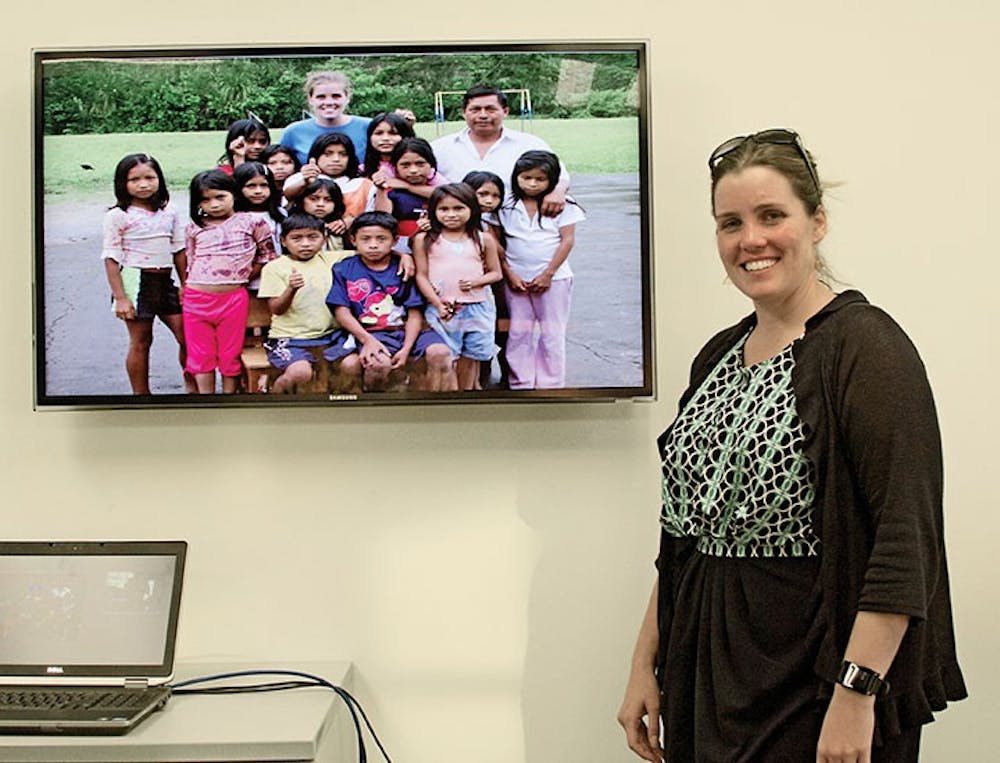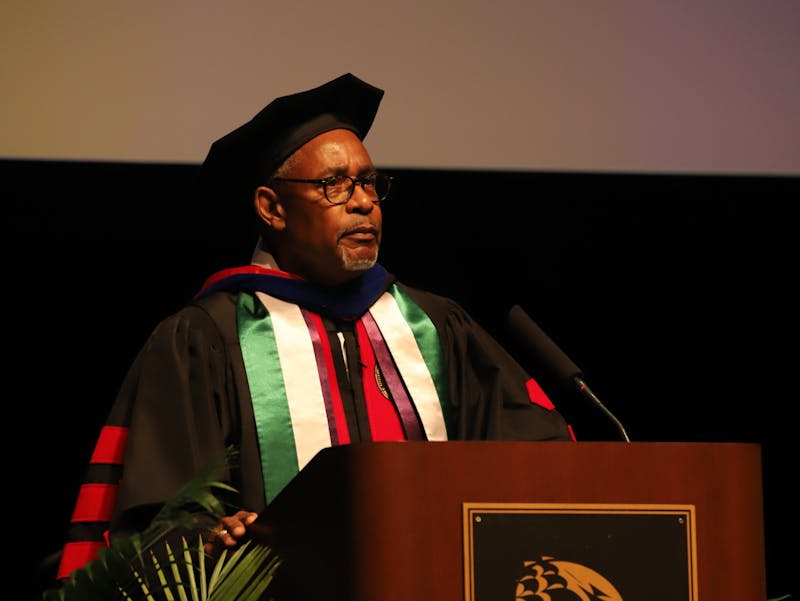A stranger from a strange land stands in an Ecuadorian village tucked away in a rainforest. The community built a simple house for the newcomer to live in over the next two years.
This is what happened to Rachel Brown in 2004 when she traveled to South America after volunteering for the Peace Corps.
Brown, a field-based recruiter and former volunteer, visited Shippensburg University on Monday, Oct. 27, to share her experiences in Ecuador and talk about the Peace Corps.
If you have ever wanted to live in a foreign country and devote two years of your life to others, you might consider joining the Peace Corps, like Brown.
“I think it’s a wonderful program,” Victoria Kerr, director of the SU Career Center, said about the Peace Corps. Kerr invited Brown to provide an information session as part of the Career Center’s Career Day.
More than 30 people attended the hour-long event and received information about what it is like to be in the Peace Corps and how to join the federal organization.
“To me, it’s all about the relationships,” Brown said, referring to her favorite aspect of the Peace Corps. “Those people were not going to forget me or our relationship and I wasn’t going to forget them.”
Brown spent two years in the Amazon rainforest in Ecuador, helping the local community she was stationed with improve their livelihood. The Peace Corps is looking for people who want to give back, Brown said.
“It’s up to everyone to make the decision to see if it’s for them,” Brown said, who recommends those interested in joining to attend information sessions and visit the Peace Corps’ website.
“Joining the Peace Corps has been my dream for about 10 years,” said Andrew Steuer, a junior at SU who attended the event. “My whole life I’ve been wanting to give back.”
Steuer plans to volunteer with the Peace Corps shortly after he graduates. He said the session was highly informative, particularly the part about the application process.
There are eight steps in becoming a member: apply, complete a health history form, choose a current opening, attend an interview, receive an invitation, get medically cleared to serve and depart for your assignment.
“We are really going to be looking at your resume,” Brown said. Those selected for an interview can now complete it over the Internet.
To be eligible to apply for the Peace Corps, interested persons must be at least 18 years of age and a U.S. citizen.
Many, but not all positions require a person to have a bachelor’s degree. There is no second language requirement, but learning a second language may be part of the training.
“During training, most volunteers live with a host family,” Brown said. She stressed that integration with the community is imperative.
There are six major fields of work a volunteer can choose from. They include education, health, environment, community economic development, youth in development and agriculture.
One of the core expectations of the Peace Corps is a 27-month commitment with the organization. This includes three months of training and 24 months of foreign service.
“There is no fee and we provide three months of training,” Brown said. During a volunteer’s service they receive free housing, complete dental and medical care, a living allowance and transportation to and from the country.
Other benefits include 48 vacation days over the two-year volunteer period, opportunities for student loan deferments and the possibility of completing graduate work while in the Peace Corps.
According to peacecorps.gov, the Peace Corps was founded on March 1, 1961 when former President John Kennedy signed Executive Order 10924. Since its establishment, the federal organization has served 139 countries and with more than 215,000 volunteers.
The Peace Corps has been temporarily removed from Sierra Leone, Guinea and Liberia, due to the outbreak of Ebola. Protecting the volunteers is important, Brown said.
For more information about the Peace Corps, visit peacecorps.gov.




The Slate welcomes thoughtful discussion on all of our stories, but please keep comments civil and on-topic. Read our full guidelines here.